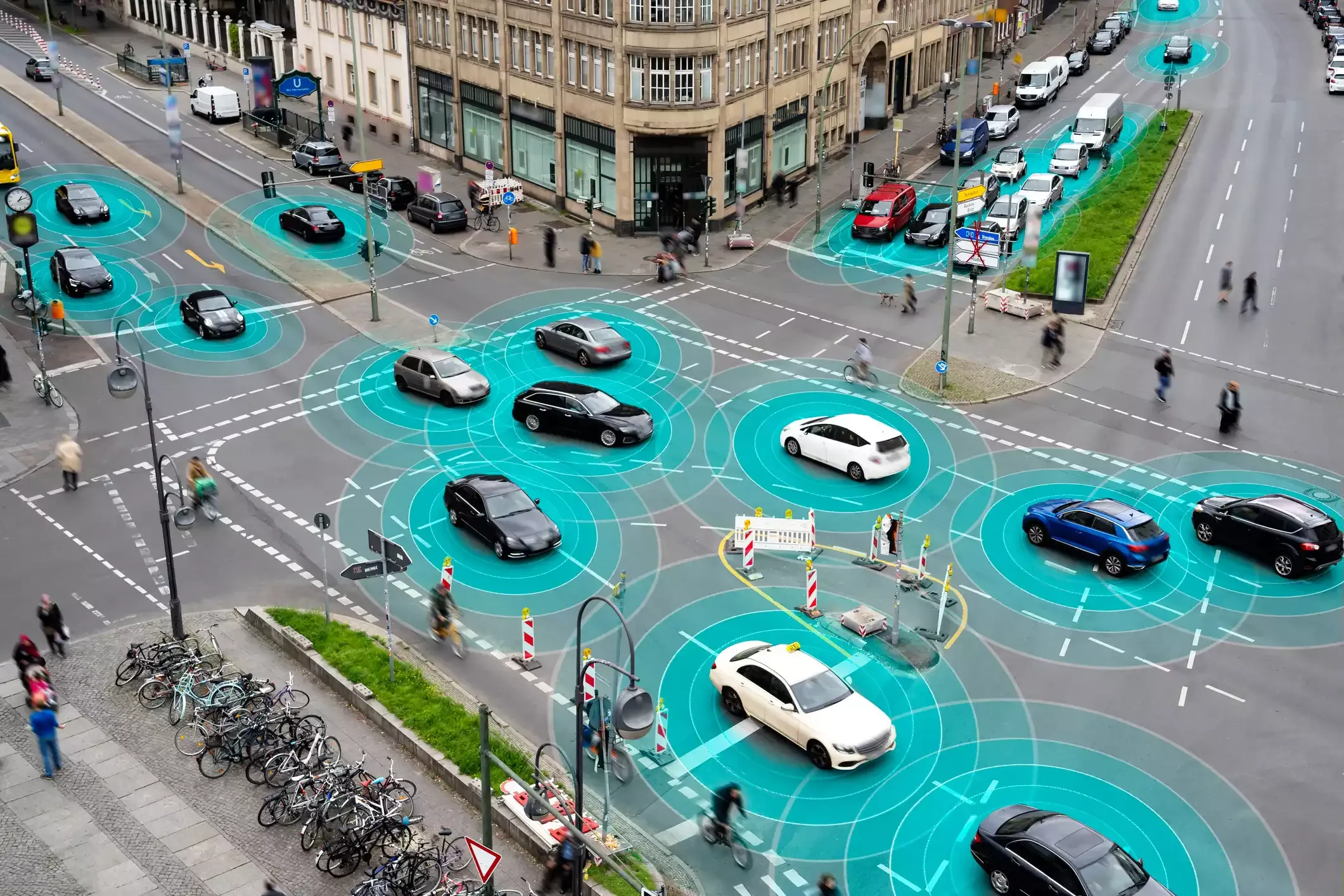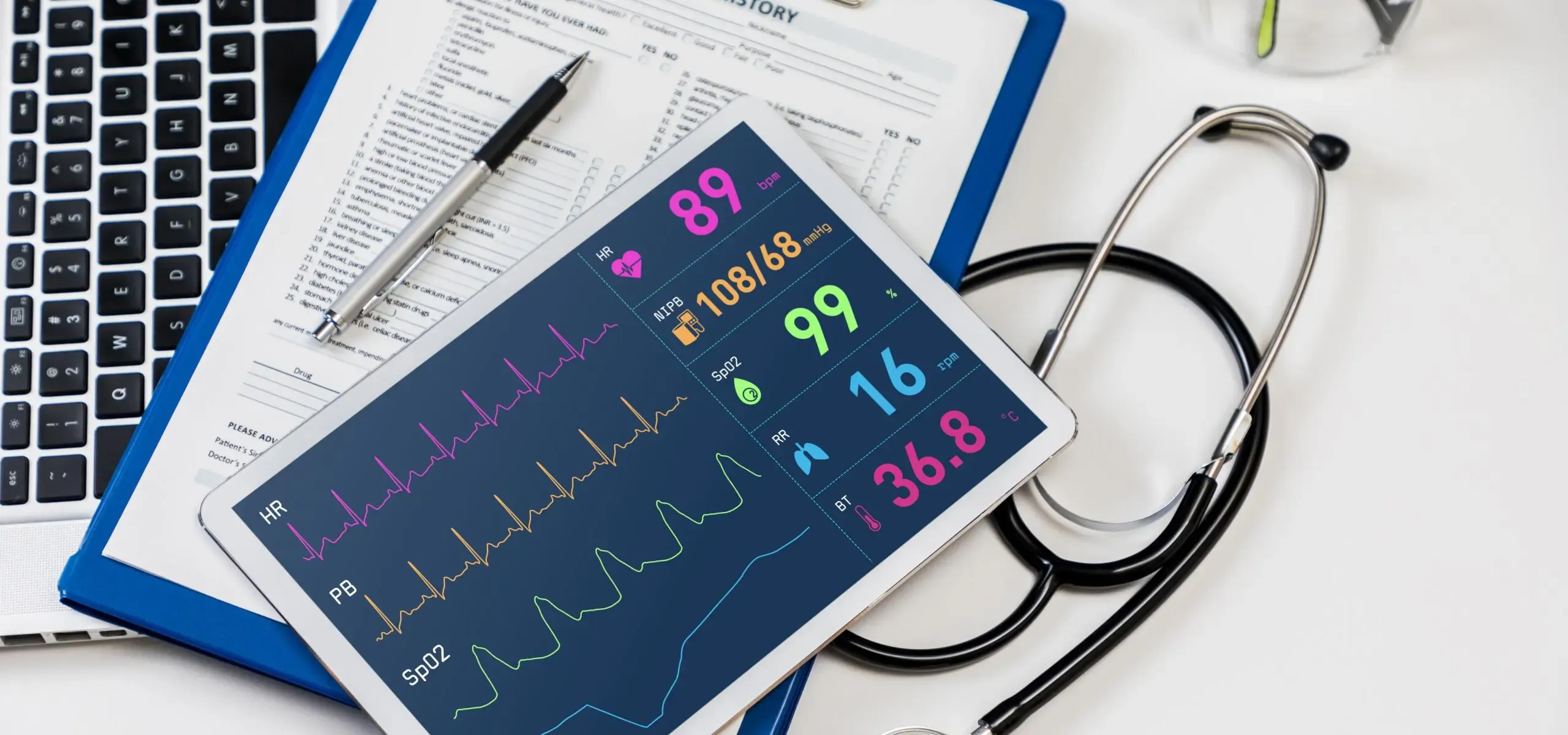Services
SERVICES
SOLUTIONS
TECHNOLOGIES
Industries
Insights
TRENDING TOPICS
INDUSTRY-RELATED TOPICS
OUR EXPERTS

April 10, 2025
While IoT architectures can vary based on the type of the IoT solution and its intended use, they generally follow a six-layer structure that can be customized and optimized to meet specific organizational needs.
The device, or perception layer, is the first layer of the IoT architecture, responsible for collecting raw data from the physical world and enabling the system’s interaction with it. This layer includes sensors, actuators, identification technologies such as RFID and QR codes, and smart devices.
The connectivity, or network layer, facilitates data transmission between the perception layer and other layers of the IoT architecture and supports bidirectional communication, allowing both data collection from sensors and transmitting control commands to actuators. The connectivity layer consists of communication networks (short-range, long-range, wired), communication protocols, and internet gateways and edge devices.
At the processing layer, the raw data collected by IoT devices is accumulated, stored, processed, and analyzed to be further used by decision-makers to get valuable insights and take necessary actions. This layer can include a variety of cloud or on-premises tools and technologies, including databases, data centers and big data warehouses, real-time and near real-time data processing and analytics platforms, artificial intelligence and machine learning algorithms, and more.
The application layer consists of appealing user interfaces that facilitate IoT device control. This stage includes various web and mobile apps, web portals, and other software solutions that allow users to access and manage the underlying IoT devices. The application layer also incorporates data visualization and dashboards, for presenting the collected information and generated AI-driven insights. Additionally, it provides APIs and integrations with enterprise systems, facilitating seamless interoperability with existing business processes.
The process layer is responsible for the IoT system’s governance, operations, and management, ensuring its smooth and secure functioning. This layer acts as the coordination and control hub, integrating business policies, operational workflows, and system management functions to maintain the efficiency, compliance, and reliability of the IoT ecosystem.
Security is a cross-cutting layer in the IoT architecture, essential to ensure the protection of the IoT solution and the data it collects and operates. Each layer of the IoT architecture requires specific security measures, e.g., IoT devices require physical protection whereas an IoT web application has to be protected with access control mechanisms.
We can help
The core elements of any IoT system are connected devices equipped with sensors and actuators.
Sensors capture changes in the surrounding environment and transmit the information to the processing center. Sensors can gather information about the temperature and moisture or detect motion, noise levels, and poisonous substances in the air.
Another important group of elements at the perceptual level of the IoT architecture is actuators. Actuators serve as “movers”, converting the impulse sent from the control system into a mechanical motion.
A good example of how sensors and actuators work can be a smart home temperature control system. A temperature sensor measures the temperature inside a room and sends it to a microcontroller that analyzes the received data. If the temperature is above the predefined threshold, the microcontroller sends a signal to a smart thermostat (actuator) to activate air conditioning.
Temperature
Moisture
Light
Motion
Noise
Proximity
Level
Accelero-meters
Gas
Optical
Gyroscope
Chemical
Types of IoT sensors
An edge layer is incorporated in the IoT architecture between the perceptual and data processing layers, helping shift the data analysis processes closer to the network’s edge. In a traditional IoT architecture, all data collected by IoT sensors is transmitted to the cloud for analysis and then the response is returned back to trigger a required action. In some cases, such an approach can be inefficient, as back-and-forth data transfer takes time. To reduce latency and optimize bandwidth, IoT edge devices are equipped with computing capabilities to be able to process a part of the data locally in near real time.
An example of such an edge device with edge computing power is the technology used for predictive maintenance in industrial settings. For instance, a vibration sensor with a processing chip is attached to an industrial machine to monitor vibration patterns in real time. The device processes the data locally to detect anomalies. If an anomaly is detected, the device can send an alert or slow down/turn off the machine to avoid damage or worker injuries. So, instead of sending all raw vibration data to the cloud, the device transmits only critical and already processed insights, accelerating the decision time.
Range of action | Technology | Distance | Use cases | ||||||||||
|---|---|---|---|---|---|---|---|---|---|---|---|---|---|
Proximity | NFC | 10 cm | Payment systems | ||||||||||
Personal area network |
| ||||||||||||
Local area network | Wi-Fi |
| Smart homes | ||||||||||
Wide area network |
|
Scheme title: Overview of some of the most relevant communications technologies for IoT
Data source: ScienceDirect
The use of a particular network technology that will connect the IoT ecosystem depends on the type of IoT solution, balancing factors such as power efficiency, data rate, latency, and coverage. Personal area network technologies are usually applied in IoT solutions that operate within close proximity of each device, e.g., smart home with smart thermostats and smart lightning. At the same time, wide area network technologies are more often used in IoT solutions that require data transmission at longer distances and cellular network connection.
To share data between IoT devices and applications, the following messaging and data exchange protocols are usually used:
Handling large volumes of data and having multiple endpoints makes IoT solutions highly vulnerable to various security threats like DDoS attacks, device hijacking, unauthorized access, and data breaches. That is why it is important to protect an IoT solution at all architectural levels.
The safety and security of the IoT sensing layer are usually ensured by tamper-resistant hardware, secure firmware updates and booting, as well as continuous monitoring to detect malicious actions.
Securing data transmission between IoT devices and cloud-based and on-premises IoT platforms requires implementing end-to-end encryption with TLS/SSL, or VPNs, following the zero trust network approach, as well as using firewall protection, network segmentation, and continuous monitoring for suspicious network activity.
At the data processing or cloud layer, the security of the IoT data is usually ensured by securing API gateways and applying data encryption, role-based access controls, and multi-factor authentication mechanisms.
Protecting user-facing services requires implementing such mechanisms as secure authentication (biometric authentication, single sign-on (SSO), and multi-factor authentication), providing regular software security patches and updates, and establishing security information and event management (SIEM) systems for real-time threat detection.
Boosting the efficiency of production processes, increasing automation, and monitoring the quality of end-products.

Improving patient care and increasing hospital efficiency with smart devices and remote diagnostics.

Optimizing inventory management, streamlining checkout, and enhancing customer experience.

Making homes smarter, safer, and more efficient and comfortable with connected IoT devices.

Enabling IoT predictive maintenance for longer vehicle lifespan and facilitating connected car technology.

Optimizing crop yields and the usage of resources while reducing costs and improving sustainability.

Enhancing the efficiency of the supply chain, lowering operational costs, and increasing drivers’ safety.

Enabling efficient city management and increasing the efficiency and convenience of urban life with IoT technology.

Providing insurance companies with evidence-based information from their clients’ connected devices and preventing loss.

The architecture of an IoT solution should support horizontal and vertical scaling and be able to handle an increasing number of smart devices, additional functionality and growing data volumes.
IoT solutions require careful balancing and distribution of edge and cloud computing capabilities. Taking a hybrid approach helps ensure that critical operations run efficiently at the network edge while leveraging the cloud for deep AI-powered analysis.
All IoT components, regardless of their manufacturer, should use standardized data formats, share data interpretation mechanisms and use compatible communication protocols to ensure data interoperability and seamless data exchange between IoT devices, systems, and platforms.
Apart from the upfront hardware and software IoT solution costs, it is important to consider less evident expenses, such as the costs of cloud services, firmware and software maintenance and updates, as well as energy consumption.
Security influences every other factor in the IoT system: without robust security, scaling the system can introduce vulnerabilities, breaches can compromise data processing, integrations can expose systems to unauthorized access, and hidden costs can escalate due to compliance fines, data breaches, and downtime. With regard to this, an IoT solution must incorporate strong security measures at all levels of the IoT architecture.

We develop scalable IoT backends and integrations for seamless data flow across your IoT ecosystem, as well as robust IoT applications for efficient IoT device management. We also build traditional and AI-powered IoT data analytics solutions for actionable insights.
Our IoT consultants help you design an effective Internet of Things solution with a scalable architecture tailored to your IoT use case and business needs. We can also help you develop a project development plan to ensure optimal time-to-market and adherence to your budget.
Providing IT consulting and software development services since 1998
5+ years providing IoT development services
ISO 9001 and ISO 27001-certified quality and security management systems
Strategic partnership with Microsoft and AWS
Hands-on experience in artificial intelligence projects
Recognized as a leading software development services provider in a MAD report by Forrester
Designing a reliable and feasible IoT architecture requires following a strategic approach that balances scalability, interoperability, security, and cost-efficiency. Implementing a five-layered IoT architecture and customizing it to your specific needs can help ensure efficient data collection and processing in line with your needs and enable data-driven decision-making.
At Itransition, we specialize in delivering scalable, efficient, and secure IoT solutions that align with your industry and business needs. Whether you are looking to implement an IoT system into your production processes, enhance customer experience with IoT, or launch a cutting-edge smart home solution, our experts are ready to help.

Insights
Learn about the history of the Internet of Things, including its key milestones with future opportunities, as well as IoT main benefits and roadblocks.

Insights
Learn how the internet of medical things can increase the satisfaction of your patients, improve internal processes and staff allocation.

Insights
Break down the different types of sensors in autonomous vehicles and how they shape the future of autonomous cars.

Insights
Find out how the application of blockchain in IoT can help address data security issues through decentralization and operations transparency.

Insights
Discover the smart city areas that are expected to gain the greatest value from fog computing implementation.

Insights
With enterprise Internet of Things on the rise, Itransition shows why companies need to use this trending technology to create smart workplace solutions.